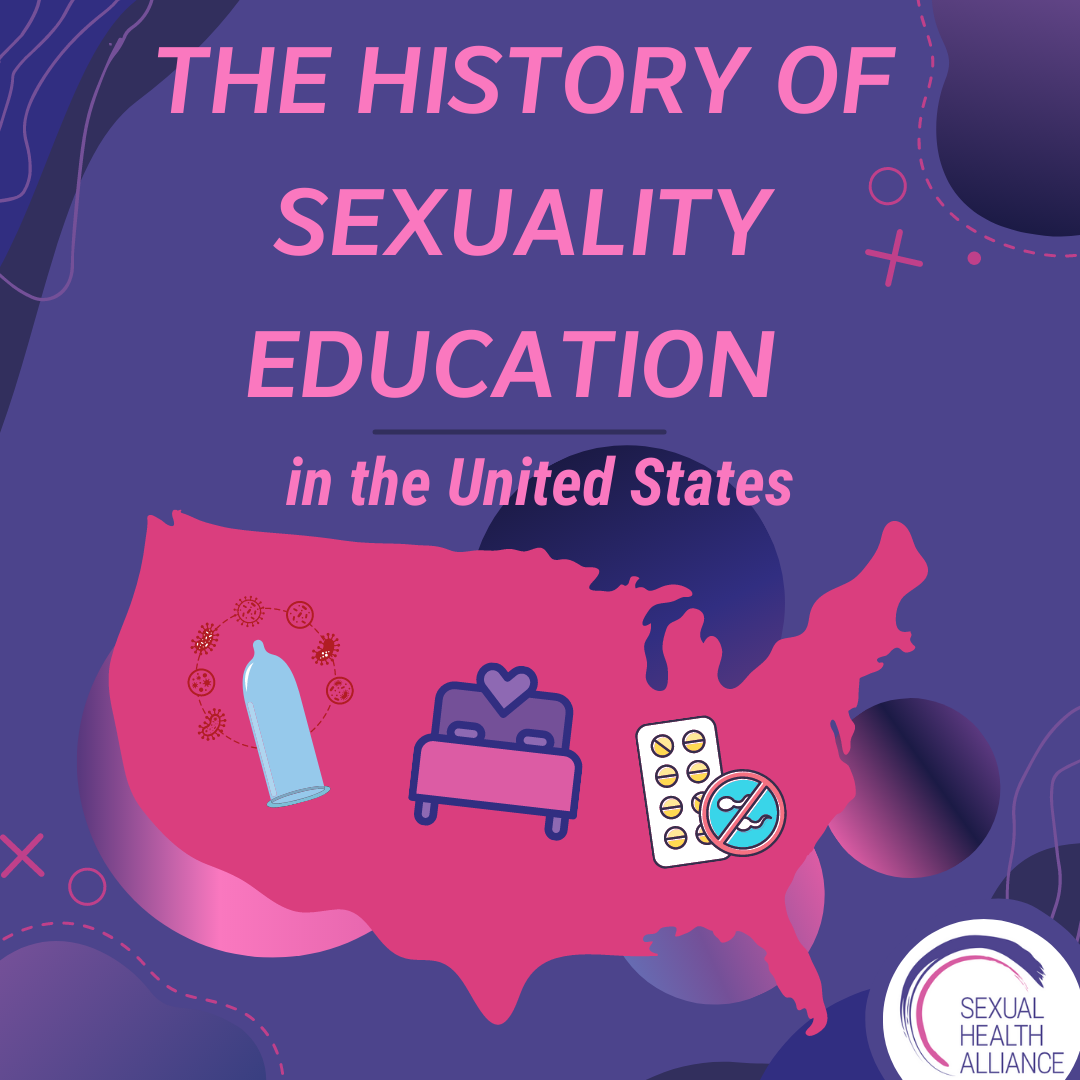Sex Ed is truly a formative experience that sticks out in our memories of elementary and high school. Sticking adolescents with raging hormones in a room together to talk about sex is memorable, to say the least.
Let’s get into the history of sex education in the United States. Buckle up.
We’re starting way back. In the early 20th century, we saw something called the social hygiene movement. The social hygiene movement was born out of public health, medicine, and social work to help control sex work and “vice.” It was largely a response to the increased rate of prostitution. This was actually considered to be part of the eugenics movement, (read more here) and was aimed at educating anglo-saxon white men, as women were to considered to have low sex drives anyway. (Good one!) The goal was to scare them into only having “virtuous” sex with their wives. The American Social Hygiene Association (ASHA)—which was created in 1914 by the merger of the American Purity Alliance and the National Vigilance Campaign—was one of the earliest advocates for these kinds of programs. While its founders had prejudiced beliefs in line with the era, it plays an extremely important role in sexuality education as we know it. Fun fact, ASHA is now American Sexual Health Association, a progressive organization with sex-positive messages.
WWII
The amount of STIs contracted by soldiers in WWII caused alarm, and led to the government funding STI prevention programs. The government also encouraged men to practice abstinence in the name of patriotism.
1960s
In the ’60s, sex education moved beyond just disease prevention. Changing attitudes towards sex encouraged a more open discussion around sexuality. However, the question of whether schools themselves should teach sexuality was still up in the air. In 1964, Dr. Mary Calderone, medical director for Planned Parenthood Federation of America, founded the Sexuality Information and Education Council of the United States (SIECUS) to provide accurate information about sex, sexuality, and sexual health.
1975
In 1975, the WHO offered this definition of sexual health.
Sexual health is the integration of the somatic, emotional, intellectual, and social aspects of sexual being, in ways that are positively enriching and that enhance personality, communication, and love. Fundamental to this concept are the right to sexual information and the right to pleasure. (WHO.)
This definition still holds up today and is the foundation of many existing curriculums.
1980s
With the AIDS epidemic, it became apparent that sexual health education was necessary in schools. However, a debate began in the United States between a more comprehensive approach to sex education, which provided information about sexual health — including information about contraception — and abstinence-only programs.
1990s
In the 90s, a more comprehensive sexual education curriculum was formed and introduced by SIECUS. They convened the National Guidelines Task Force, a panel of experts that constructed a framework within which local communities could design effective curricula and/or evaluate existing programs. The result was Guidelines for Comprehensive Sexuality Education — Kindergarten — 12th Grade, and this is what we base our curriculums on today.
Early 2000s
In 2007, Douglas Kirby identified 17 characteristics of effective curriculum-based programs based on his meta-analyses of various schools. Research has shown that when comprehensive programs include these 17 characteristics, they positively affect adolescent sexual behavior. It was thus disproven that abstinence-only programs were effective at preventing teenage sex.
2015- Present
During George W. Bush's presidency, the government-financed many abstinence-only organizations. This shifted under Obama’s term, where the administration transferred funds from Absitence Only and budgeted $190 million in new funding for two new sex education initiatives: the Teen Pregnancy Prevention Program (TPPP) and the Personal Responsibility Education Program (PREP)
The Trump administration tried to reverse this by cutting funding to these programs and instead shifting to abstinence-only programs.
While there hasn’t been much public information available on Joe Biden’s plans for sexual education reform, we hope that these funds will be reallocated to organizations providing comprehensive sex education.
Sexual education has come a long way and still has a long way to go. The way we learn about sex at a young age can deeply impact the way we view our bodies, our sexuality, and the world around us. It is important to be familiar with the sexual education your children or children you care about are receiving, and also how to best support them in whatever your role may be. I’m sure you remember how awkward and even embarrassing sexual education was in middle school—let’s do our best to make this type of learning as comfortable and non-judgemental as possible!
by:Jessica Fillak




